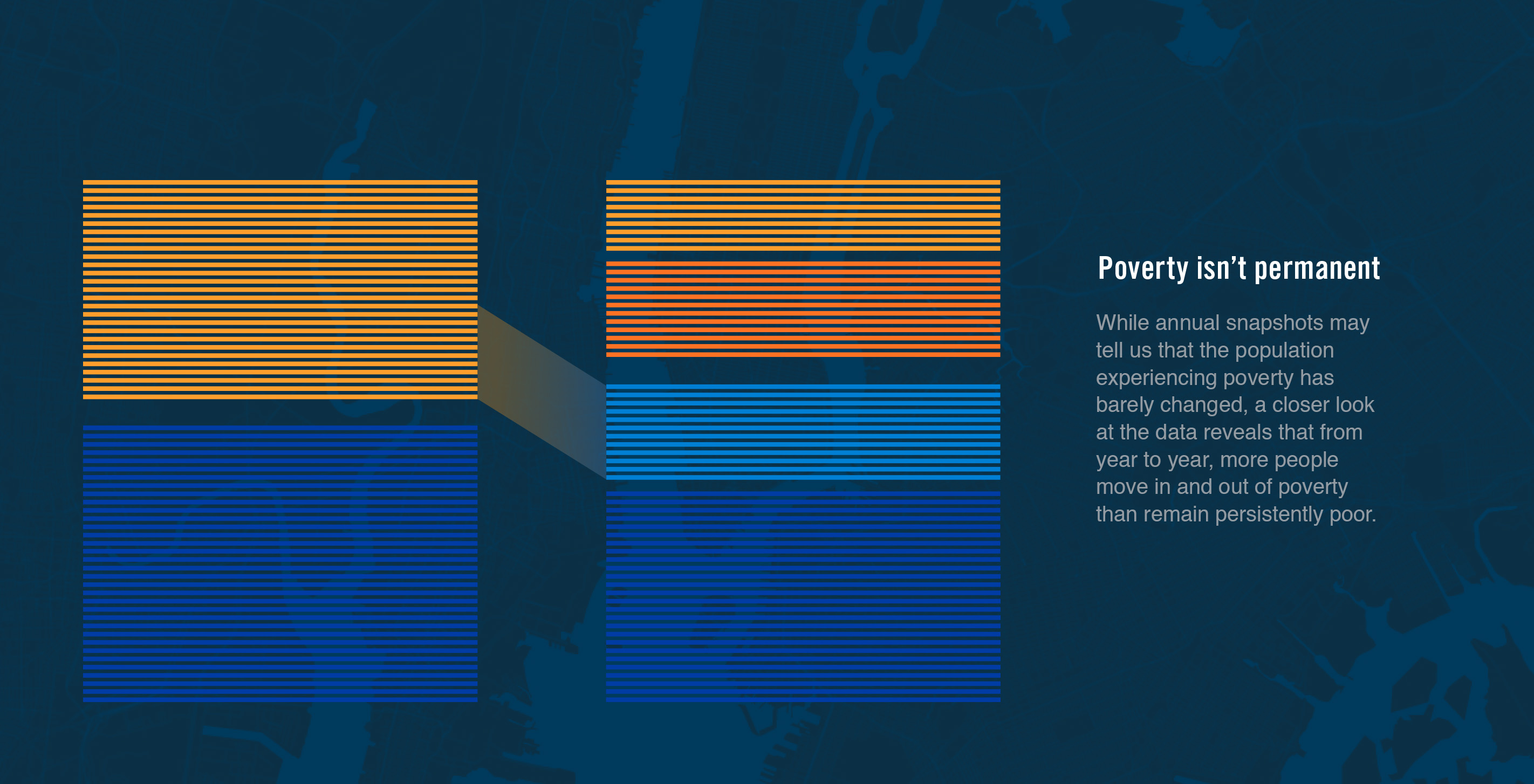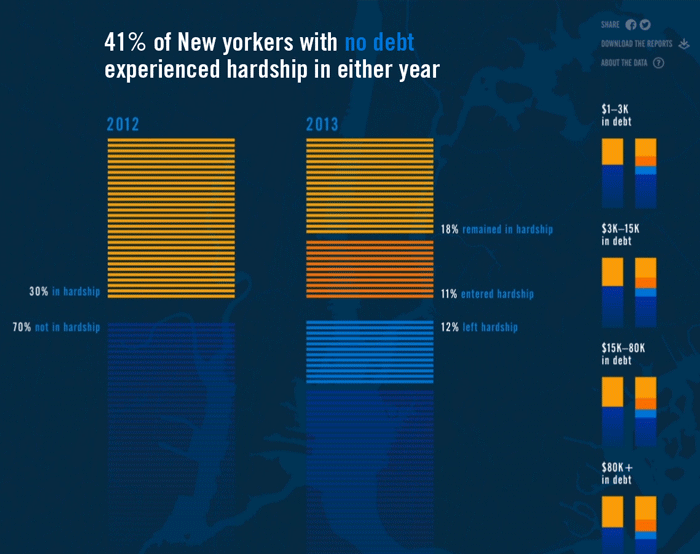


The premise of the Poverty Tracker rests on the notion that official poverty measures are wrong. Considering the rising cost of living in different geographic areas, and the wide range of income sources families receive--the rather outdated federal poverty measure doesn't fully capture the magnitude of disadvantage, particularly for those in New York City. As a result, Robin Hood has elevated the conversation about material hardship. The term can include anything from being evicted, forgoing medical care, having utilities cut off, or running out of food--all due to lack of funds. For the 9% of adult New Yorkers who remained in poverty from 2012 to 2013, 23% stayed in hardship. Material hardship, as it turns out, has a lot of staying power.
The latest addition of the Poverty Tracker reminds us that people move in and out of financial disadvantage. While owning assets like a home, a car, or savings help cushion New Yorkers from financial struggles, we were surprised to find that those with large sums of debt are actually less likely to experience poverty. If you take a step back to think about it, it makes sense: you need a high income to qualify for large loans. At the same time, debtors who owe large sums of money are more likely to experience material hardship.

Poverty in New York isn't permanent, but it's certainly still a problem. To learn more about the persistence of poverty and hardship for different populations, explore the data on the site.
We’d love to hear what you’re working on, what you’re curious about, and what messy data problems we can help you solve. Drop us a line at hello@fathom.info, or you can subscribe to our newsletter for updates.